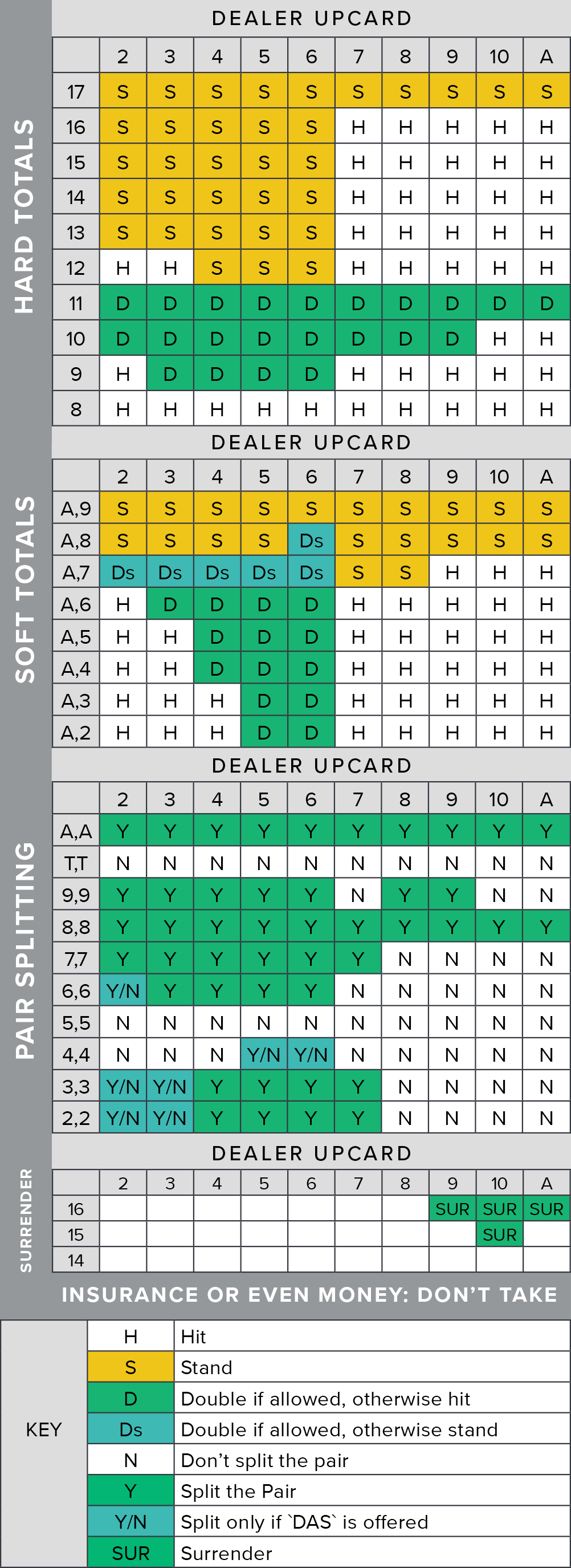Black Strategy Card
On This Page

Introduction
Feb 20, 2021 Looking at our blackjack chart, the number listed horizontally across the top corresponds to the Dealer’s up card. Find your hand (the player’s hand) along the left column of the chart and cross-reference your hand with the Dealer’s card to determine the play you should make. Chart choices change the charts. Black Jack card game to play online. Blackjack when the cards on the table add 21; The most popular of all Casino games.
To use the basic strategy, look up your hand along the left vertical edge and the dealer's up card along the top. In both cases an A stands for ace. From top to bottom are the hard totals, soft totals, and splittable hands. There are two charts depending on whether the dealer hits or stands on soft 17.
Other basic strategy rules.
- Never take insurance or 'even money.'
- If there is no row for splitting (fives and tens), then look up your hand as a hard total (10 or 20).
- If you can't split because of a limit on re-splitting, then look up your hand as a hard total, except aces. In the extremely unlikely event you have a pair of aces you can't re-split and drawing to split aces is allowed, then double against a 6, otherwise hit.
If you play a mixture of six-deck games, some where the dealer hits a soft 17, and some where he stands, and you only wish to memorize one strategy, I would recommend you memorize the one where the dealer stands on soft 17. The cost in errors due to playing the wrong strategy is 2.3 times higher playing a stand on soft 17 game, with the hit on 17 strategy, than vise versa.
Basic Strategy in Text
For the benefit of my blind readers, here is the above strategy in text form, when the dealer stands on soft 17 and surrender is allowed. To use the strategy, start at the top, and follow the first rule that applies.
Surrender
Black Strategy Card
- Surrender hard 16 (but not a pair of 8s) vs. dealer 9, 10, or A, and hard 15 vs. dealer 10.


Split
- Always split aces and 8s.
- Never split 5s and 10s.
- Split 2s and 3s against a dealer 4-7, and against a 2 or 3 if DAS is allowed.
- Split 4s only if DAS is allowed and the dealer shows a 5 or 6.
- Split 6s against a dealer 3-6, and against a 2 if DAS is allowed.
- Split 7s against a dealer 2-7.
- Split 9s against a dealer 2-6 or 8-9.
Double
- Double hard 9 vs. dealer 3-6.
- Double hard 10 except against a dealer 10 or A.
- Double hard 11 except against a dealer A.
- Double soft 13 or 14 vs. dealer 5-6.
- Double soft 15 or 16 vs. dealer 4-6.
- Double soft 17 or 18 vs. dealer 3-6.

Hit or Stand
- Always hit hard 11 or less.
- Stand on hard 12 against a dealer 4-6, otherwise hit.
- Stand on hard 13-16 against a dealer 2-6, otherwise hit.
- Always stand on hard 17 or more.
- Always hit soft 17 or less.
- Stand on soft 18 except hit against a dealer 9, 10, or A.
- Always stand on soft 19 or more.
As I've said many times, the above strategy will be fine under any set of rules. However, for you perfectionists out there, here are the modifications to make if the dealer hits a soft 17.
- Surrender 15, a pair of 8s, and 17 vs. dealer A.
- Double 11 vs. dealer A.
- Double soft 18 vs. dealer 2.
- Double soft 19 vs. dealer 6.
My thanks to Kelly for putting together the above text strategy.